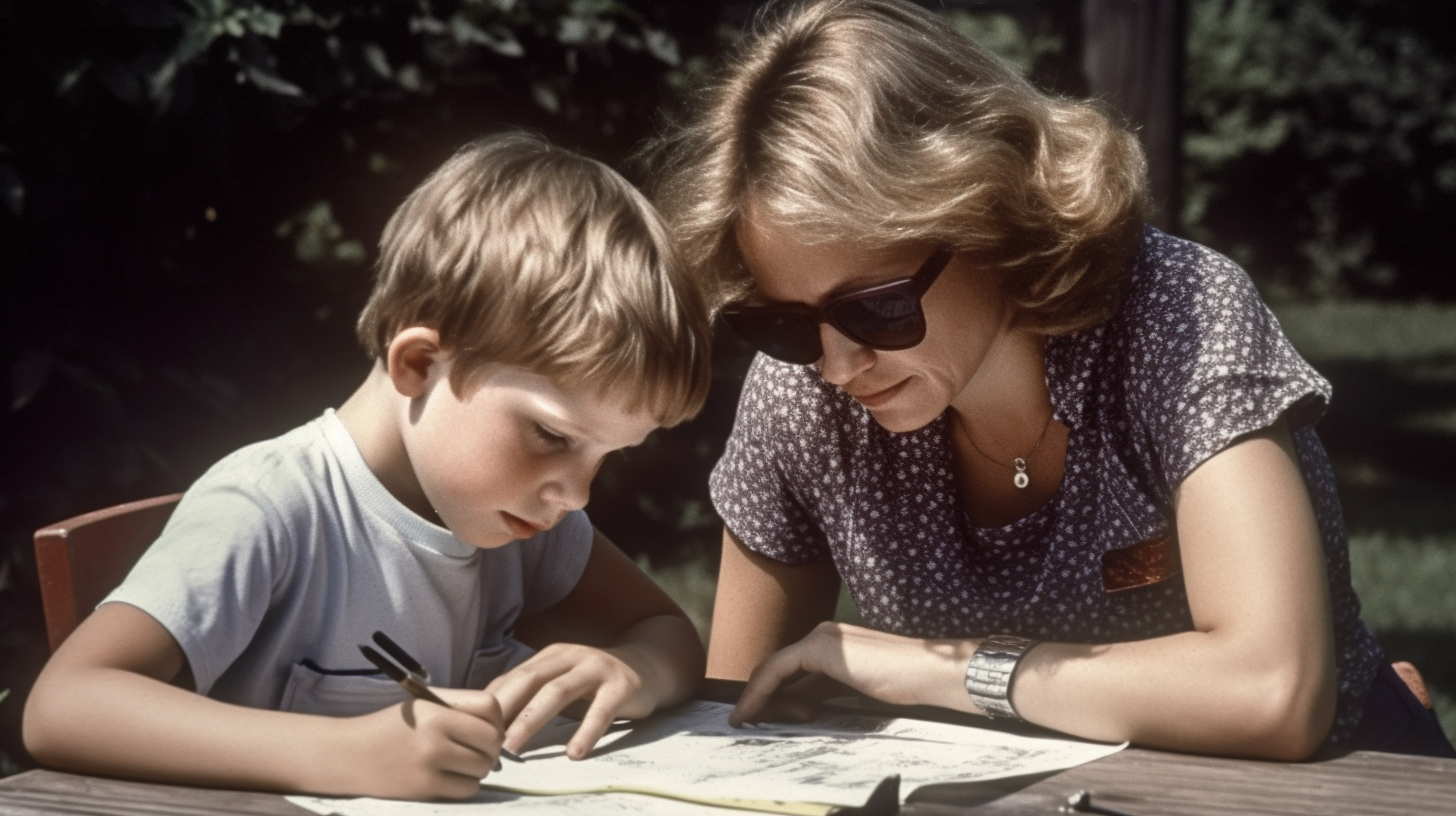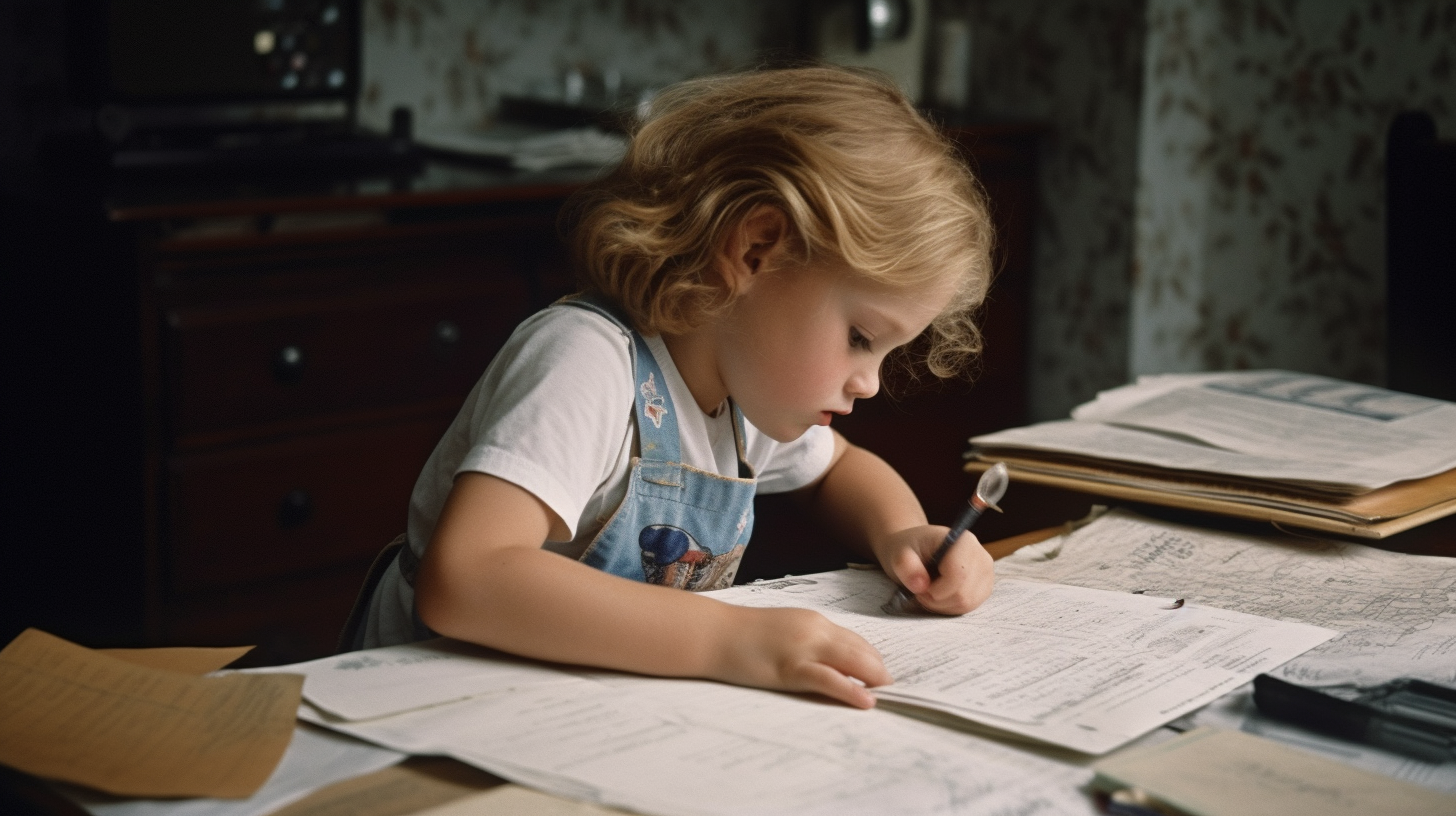Homeschooling is an education system that has been around for centuries. It gained major popularity in the United States during the late 1970s and early 1980s when parents began to become more dissatisfied with public schools. It involves teaching children at home rather than sending them to school, providing more personalized learning approaches, more focus on individual interests, and a greater ability to adjust instruction to accommodate various learning styles. Homeschooled students have gone on to become successful in a variety of fields – from politics to music.
Homeschooling is a form of education in which a student is educated at home, instead of in a public or private school setting. It typically involves the parents or guardians taking on the role of instructor and providing an educational program tailored to the individual student’s needs. Homeschooling began to gain popularity in the United States in the early 1970s and has since become an increasingly popular alternative to the traditional education system. Education experts point to the economic, religious, and cultural changes in the US as major catalysts for this shift.

Homeschooling has been around since at least 1643, when Puritan theologian John Cotton wrote “I have oft received a visit of a family which consists of twelve children, the father teaching them himself.” Homeschooling has grown in popularity over the centuries and has seen a resurgence again in recent years. There are many benefits of homeschool education. Homeschooling allows parents the ability to customize their child’s education and tailor it to their interests, needs, and strengths. It also allows parents to provide a safe, nurturing environment and the ability to monitor their child’s academic progress and social development. Other benefits of homeschool education are a bigger emphasis on spiritual growth, greater exposure to different studies and activities, increased one-on-one attention, and more flexibility when it comes to scheduling. Homeschooling also offers parents the opportunity to get to know their children better and to be actively involved in their education. This can help them to better respond to their child’s needs and foster a closer parent-child bonding. Furthermore, homeschooling allows children to develop at their own pace and pursue skills they might have otherwise been overlooked in a traditional public-school setting.
Historical Antecedents of Homeschooling
Homeschooling has a very long history, with records of families teaching at home dating back to the 1600s in colonial America. The earliest forms of homeschooling were described in the 1600s as being an “alternative” form of education for children whose parents were too busy to organize conventional schooling for them. In general, homeschooling during this period was limited to wealthier families who had access to more resources and books, further influencing educational achievement.
The modern movement of homeschooling began in the1970s and is largely attributed to a small group of distinct individuals and groups. In addition to the powerful influence of authors like John Holt and Raymond and Dorothy Moore, the growth of Christian Fundamentalism in the 1970s created an environment where homeschooling was seen as a viable option from a religious point of view.
The Legal Defense Association’s successful defense of multiple homeschooling families and subsequent legal battles in the 1980s sparked a national debate that ultimately led to greater acceptance of homeschooling in a variety of social and philosophical contexts.
The modern homeschooling movement also owes a debt of gratitude to grass-roots organizations such as the Home School Legal Defense Association, National Home School Network, and Assembly of Home Educators, among others. These organizations provided support, resources, and a sense of community to many homeschooling families who felt isolated and unsupported.
Early influences of homeschooling (Plato’s Academy)
Homeschooling has its roots in philosophical education, with the earliest influences being attributed to the Academy of Plato, which was founded in Athens, Greece, in 387 BCE. Plato’s Academy was a hub for academics, and focused on discussing and debating philosophical ideas, as well as the mentoring of students.
Plato’s Academy laid the foundation for a form of education that was more self-directed, individualized, and flexible than the education of the time, which was based upon accepted wisdom taught by rote memorization. This early form of “homeschooling” was a training ground for the future scholars of the Classical world. The concept of homeschooling, as we now know it, first appeared in the United States in the late 19th century. During this time, parents interested in creating individualized learning opportunities for their children started to develop their own curriculums. This became known as “holistic” or “unschooling.”
In the mid-20th century, parents began to form groups and organizations with the purpose of facilitating greater support and information sharing for homeschooling families. Over the decades, homeschooling has grown into a more mainstream and accepted approach to education, while also developing into a resourceful and dynamic educational method used by thousands of children and their families throughout the United States and the world.

Reformation period of homeschooling
Homeschooling dates back centuries but began to gain momentum during the Reformation period of the 16th century. The movement had its roots in the idea that parents have the authority to educate their children rather than relying on the Church for religious instruction. Reformers encouraged parents to take responsibility for their children’s instruction as a way to remain true to their religious beliefs. This grassroots effort gained momentum in the 17th century when English Puritans, French Huguenots, Dutch Mennonites, and German Pietists all created their own schooling systems. Much later, in the 19th century, the modern homeschooling movement got its start in the United States, when a Massachusetts mother, Sophia Fenner, wrote a book arguing for more parental involvement in elementary education. Since then, homeschooling has grown in popularity and today there are over 1.7 million students in the United States being homeschooled.
Birth of Homeschooling as an Educational Option
Homeschooling as an educational option is said to have started in colonial America as a form of private tutoring, although its first documented use as a form of education dates back to 1670 in the United Kingdom with the Act of 1670. The purpose of this act was to remove the control of education from the Church of England and allow for civil control and individual rights. During this time, many families employed tutors in their homes and taught their children by providing personalized and often religious instruction.
In the United States, a number of states began to recognize homeschooling as a legitimate form of education in the early 19th century with states such as Massachusetts, New Hampshire, and Pennsylvania providing legal recognition of homeschooling.
The modern homeschooling movement began in the 1960s and 1970s when parents began to question the public school system and sought out alternatives. This was due to the social and political unrest of the times, as well as a search for alternatives to address religious and educational needs. During this time, support groups formed all over the United States to provide resources and encouragement for homeschooling families, and a few states allowed homeschooling options through legislation or court rulings.
Today, homeschooling is a popular and accepted form of education for children all across the world. In the United States, homeschooling is legal in all 50 states and has become more prevalent in recent years as more parents seek alternative education options for their children. The reasons for choosing homeschooling are varied and personal, encompassing factors such as dissatisfaction with traditional school systems, the desire for a more personalized and tailored educational experience, concerns over bullying, religious or philosophical beliefs, or the need to accommodate a child’s unique learning style or special needs.

Murray v. Duryee (1948)
In the case of Murray v. Duryee (1948), the U.S. District Court of Washington determined that James Robert Murray could practice homeschooling. The court’s ruling was a landmark moment in the legal history of homeschooling, as it was the first case that recognized a parent’s legal right to educate their child at home. By recognizing this legal right, the court opened the door for other parents to homeschool their children without fear of repercussions. The ruling established the precedent for future court cases and legislation that would eventually pave the way for homeschooling as we know it today.
The true emergence of homeschooling in the 1970s
Homeschooling as a formal educational movement began in the 1970s, when a growing number of parents became increasingly frustrated with the education that their children were receiving in public and private schools. Parents began to advocate for more individualized instruction for their children and for the chance to participate in their own children’s education. These pioneers believed that they could do a better job of providing a quality education in an environment where they felt more comfortable and in control.
In the early 1970s, many states adopted laws officially recognizing homeschooling as a legitimate form of education. As homeschooling began to grow, so did the support and social networks, mainly through grassroots organizations like IHEN (the Institute for Home Education Network, founded in 1992). This sense of connectedness enabled organized homeschooling to continue to spread.
As the decades passed, homeschooling continued to grow in popularity. Thanks to technology innovations, more resources became available for homeschoolers to access. With the development of online communities, open discussion about homeschooling, and the proliferation of homeschooling conventions, the movement became much easier to access. By 2004, over 1.5 million children were being homeschooled in the United States.
Breakthrough Homeschooling Decades
Homeschooling has become increasingly prevalent over the last several decades. In the United States, it is estimated that more than 2 million students are homeschooled. This number has continued to increase, with the most recent figures showing a 3% increase in homeschooled students from 2012-2016.
In the 1970s, the homeschooling movement was in its infancy, and laws regarding homeschooling had yet to be set. Pioneers of the homeschooling movement sought to challenge the education system and provide their children with alternative learning environments. By the 1980s, more parents were pursuing this path and were actively advocating for better legal protection for homeschoolers. The 1990s marked an even greater liberalization of laws, with most states recognizing homeschooling as a legitimate form of education.
In the 2000s, homeschooling became even more mainstream as technology and social networking began to play a larger role in connecting homeschooling families. Resources such as online classes and homeschooling networks made it easier for families to locate and access support from others pursuing the same paths. Today, homeschooling is a growing movement that continues to offer families more educational options and more opportunities to individualize their children’s education.
Impact of the 1982 United States Supreme Court decision
The impact of the 1982 United States Supreme Court decision on the right to homeschool was significant. The decision, commonly referred to as Wisconsin v. Yoder, established the right of Amish parents to exempt their children from attending a public school and to instead educate them at home. This decision helped to lay the foundation for homeschooling to become more widespread in the United States. Following Yoder, several other cases provided additional validation for homeschooling and helped to shape current U.S. homeschooling laws, including Frase v. Board of Education (1982), Pierce v. Society of Sisters (1925), and Runyon v. McCrary (1976). While homeschooling has been practiced in various forms throughout history, the Yoder decision marks the beginning of a more widespread acceptance in modern society.

The growth of the homeschool movement in the 1990s and 2000s
Homeschooling began as an alternative to formal education as early as the 1600s, but it did not become popular until the mid-1970s when a handful of families began organizing for religious and curriculum reasons. In the 1990s and 2000s, the homeschooling movement increased in popularity due to the increasing presence of non-religious homeschooling families, the availability of online courses, and the growing concerns over the quality of public school education. These factors pushed the growth of homeschooling from an estimated 200,000 in 1985 to an estimated 2 million in 2010, representing a ten-fold increase. During this period, the homeschooling movement underwent significant changes, with an increasing variety of educational options including religious, secular, and online homeschool curricula, many of which were developed in the early 2000s. Additionally, during this period, homeschoolers formed a strong network of support and established a legal framework for homeschooling rights in the United States.
Legality of Homeschooling
Homeschooling has been around for centuries, however the modern concept of homeschooling, as it is known today, appears to have originated in the late 1970s and early 1980s. As for its legality, homeschooling is generally considered legal in almost all states of the United States. In some states, homeschooling is legal if certain conditions, such as periodic education assessments, are met. In other states, parents must register with the state and be subject to monitoring, or notify the state if they intend to homeschool. Parents are typically required to establish and maintain a course of study, keep attendance records, and submit educational assessments. In some states, such as Hawaii, Maine, and Vermont, homeschooling is unregulated, and parents are not required to report their homeschooling activity or comply with any state regulations.
Compulsory Education Laws
Compulsory education laws, also known as attendance laws, are laws requiring children to attend a public or private school from a certain age until a certain grade level, or to be enrolled in homeschooling. Homeschooling started gaining widespread recognition in the 1970’s as a separate form of education, where parents or tutors provide an educational program to children in the home environment. All 50 states have compulsory education or attendance laws, but each state has its own regulations concerning homeschooling. Most states require that homeschooling households register with the department of education or the child’s local school district. The regulations may include requirements that parents be qualified to give instruction, that instruction meet certain standards and that the student be assessed.
State and Local Requirements
Homeschooling is a relatively new concept and, for the most part, state and local requirements for homeschoolers are still evolving. In general, each state and territory in the US has its own set of regulations and requirements pertaining to homeschooling. However, some common items you’ll find across most jurisdictions include: satisfactory yearly progress, an annual assessment of student learning, attendance records, and educational credentials. In some states, parents may need to register with their local school district or submit some sort of notification of intent to homeschool. These requirements typically balance out the rights of parents to exercise their authority in the education of their children, while still ensuring that students receive a high-quality education. Furthermore, ongoing debates around homeschooling regulations and the legal standards for homeschooling further underscore the importance of parents understanding and keeping up with their state and local homeschooling laws.

Concluding Remarks
Homeschooling began to gain popularity in the 1970s with the rise of alternative lifestyles, and education experts like John Holt who argued that traditional methods of education were sometimes restrictive and not tailored to individual student needs. In the 1980s, more and more parents began to utilize homeschooling as an alternative to enrolling their children in traditional schools. The popularity of homeschooling has continued to grow in recent decades due to the rise of technology that enables parents to provide their children with more personalized curricula and educational experiences. Laws governing homeschooling have also changed to better accommodate the needs of homeschooling families.
Reflection on the history of homeschooling
Homeschooling is a teaching method that has existed for centuries, though in the United States it became more formalized and widespread in the 1970s. Prior to that, some religious communities had practiced some form of homeschooling as a way of passing Christian beliefs and values from one generation to the next. In the United States though, the most notable precursor to modern-day homeschooling was the one-room schoolhouse. During the 1800s, these were common in rural areas, and often the parents of students were responsible for teaching.
The trend of homeschooling really began to gain traction in the late 1970s as the “back-to-basics” movement pushed for a return to more traditional teaching methods. This was often in response to criticisms of the public school system, with parents citing the inability of the system to properly educate their children as a major concern. However, the movement did not gain as much widespread acceptance as it does today until several decades later, as greater public awareness and improved technology made it easier for parents to access resources and tailored curricula.
Recognition of homeschooling as a viable educational option
Homeschooling has been an educational option for centuries, but it gained renewed popularity in the 1970s to 1990s. The growth of homeschooling in the US during this time was driven by frustration from parents about large class sizes, poor teaching in schools, and a lack of individualized learning plans. It also grew in response to increased concerns about safety in public schools, and an ask for parents to have more control over their children’s education. In response, many homeschooling organizations were formed, and state laws on homeschooling have been increasingly relaxed. The US Department of Education now recognizes homeschooling as a legitimate educational option.
